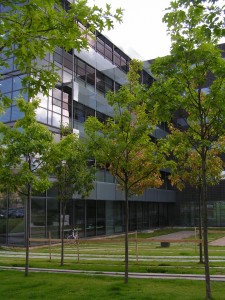Copenhagen Business School Library offers OCS as Conference Management System to Their Faculty: the Session Blog
Presenters: Kirsten Suhr Jacobsen, Helle Damgaard Andersen, Peder Lærke Nielsen
July 9th, 2009 at 3:00 pm
Helle Andersen has managed the Copenhagen Business School‘s webservices since 1999, including the main CBS page and related services such as the open conference system (OCS). Kirsten Jacobsen has managed several international conferences hosted by CBS. Together with Peder Nielsen, the library IT department leader, CBS offers conference management system OCS as part of the schools public web system.
Session Overview
The CBS has approximately 15,000 students and 1,000 staff making it one of the largest institutions in Northern Europe. The school understands that conferences are a possible forum to attract investment, scholarship and students. In turn, a professional conference system, may attract an increasing number of conferences to Denmark.
To help this initiative, the university has allocated 3 years of funding for a conference Secretariat at CBS. A large number of conference management systems (CMS) were considered, and OCS was eventually chosen for being open-source, flexible, exclusively web-based and with a large available community to provide technical support.
OCS is a comprehensive package that addresses the many facets of conference management, from online submissions of relevant content to management of all people involved (from registrants to presenters and organizers). OCS even facilitates development of conference webservices and online discussion forums. In fact, the PKP Scholarly Publishing Conference 2009, was managed using OCS. The system’s main strengthes lies in its flexibility and detailed indexing capactiy, which allows for dealing with multiple conferences simultaneously. OCS 2.0 is originally based on open-source code developed for open journal systems, and the CBS group made several productive improvements through formatting modifications and software plug-ins.
Unfortunately, the CBS group has run into multiple difficulties overcoming template configuration problems (especially with navigation menus), and a large portion of time was spent discussing multiple suggestions for improvement to the core software. Majority of the CBS group’s concerns described issues surrounding formatting, style design, and the lack of descriptors from pull-down menus. Other issues raised included expansion of administrative modules, and further development of OCS documentation and tutorials. CBS has already started this process, and suggested that perhaps resources be pooled with the PKP support group and collaborative documents be published on wikipedia.
Peder Neilsen facetiously commented that it is a “Danish tradition of not talking about what is good, but what could be better.” Certainly the described OCS strengths lay not only in its cost (free), but also in the flexibility conferred by open-source code. Furthermore, OCS users may benefit from accessing not only the development team, but a support group comprising of an international community of fellow users. Certainly, this session highlighted the productive interplay between the open-source software developers (of whom Alec Smecher was present in the audience to represent) and the users. Continual feedback drives steady modifications to the original source-code, new plug-in creations and essentially product evolution.
July 13, 2009 Comments Off on Copenhagen Business School Library offers OCS as Conference Management System to Their Faculty: the Session Blog
Importing Backissues into OJS: Development of an OJS Import Script with Django: the Session Blog
Presenter: Syd Weidman, Library Systems Supervisor, University of Winnipeg – Session Abstract
Session Overview
Why was this an issue?
With the transition to open-access publishing of several journals at the University of Winnipeg, Syd Weidman and the University library have been involved in multiple aspects of this transformation. Given that these journals have been in print for decades, one of the major obstacles that needed to be addressed was the importation of back issues into an online, open-access compatible format.
Initial attempts using the available software proved difficult. They were met with bugs and their associated patches; overall, Syd described the process as “laborious and convoluted”. He surmised that “in the context of importing [a large volume of] back issues, small efficiencies [may] have a large impact.” With this notion in mind, Syd began work on the Open Journal Systems (OJS) Import Project.
Tackling the problem – Use of Django
Syd highlighted the basic design goals of any software to be used for this purpose; he stressed that the process needed to be as EASY as possible. He sought to optimize the software’s ease of CONSTRUCTION, USE, DEPLOYMENT and MAINTENANCE. Being most familiar and comfortable with the Python programming language, Syd opted to use the Django Web framework to build a Web-based application to carry out the task of importing back issues.
Django is an open-source framework that was initially used by the online publishing industry. With a short digression, Syd took a moment to review the “4 freedoms” of open-source software, being the “free” use of software for any purpose, free access to its code, freedom to modify as well as an understanding that improvements will be shared with others (for more, take a look at the Free Software Foundation’s website.) Django, in particular, has several advantages over other similar frameworks, namely:
- object relational mapping – allows use of fewer lines of programming, increasing robustness
- automatic administrator interface
- elegant URL design
- pluggable template system
- flexible and robust cache system
- i18n compatible – allows for the application to be adapted to other languages without significant engineering changes
- excellent documentation
- an active mailing list (a double-edged sword!)
Success!
With the development of the new importation software, the U of W was able to scan backissues into .pdf format, to ultimately be uploaded into their respective online journals. This required the entering of appropriate metadata in order to allow for accurate archiving and searching.
Challenges and future directions
One of the difficulties in developing a script for another piece of software is to ensure that they remain in sync when new versions appear. In a subsequent OJS release following the development of the OJS importing application, incompatibilities/bugs appeared, and needed patching.
Commentary/Questions
Just prior to the question period, Syd mentioned the recent development of another application, “Quick Submit”, which may now be able to perform similar functions to his program.
Related Links
University of Winnipeg library (and their OA publications: Canadian Bulletin of Medical History, Journal of Mennonite Studies and the Canadian Children’s Literature Journal) Python programming language Django frameworkReferences
Weidman, S. (2009). Importing backissues into ojs: development of an ojs import script with django. PKP Scholarly Publishing Conference 2009. Retrieved 2009-07-08, from http://pkp.sfu.ca/ocs/pkp/index.php/pkp2009/pkp2009/paper/view/190
July 11, 2009 Comments Off on Importing Backissues into OJS: Development of an OJS Import Script with Django: the Session Blog
Open Journal Systems (OJS) software as used by African Journals Online (AJOL) – The Session Blog
July 9, 2009 at 10:30 a.m. SFU Harbour Centre (remote session). Rm. 7000
Susan Murray (Source)
Background
Ms. Susan Murray is a proactive individual working with the African Journals Online (AJOL), a non-profit organization, as the executive director for over two years. Her she academic background is on development economics and she is focused on opening access to information in developing countries such as Africa.
Session Overview
Ms. Murray’s session is a journey from the 1990s to present day focusing on the progression of access to African Journals Online (AJOL) (Session Abstract). She begins with an overview of the journal, followed by the users and stakeholders involved, which she ties in to a comparison of the old and new systems along with the future outlook for AJOL, and finally she concludes the presentation with a business plan and parting remarks.
(1) Overview of AJOL
Ms. Susan Murray started the presentation with the following quote from Mamphela Ramphele :
“There is no way we can succeed in the eradication of poverty if the developing world is not part of knowledge creation, its dissemination and utilization to promote innovation. Higher education is a critical factor in making this possible and must be part of any development strategy.”
– Mamphela Ramphele (2000)
Ms. Murray goes on to explain the importance of higher education and policies governing such institutes. She indicates that there is a long way to go in terms of sharing and transferring knowledge to the developing worlds, however it must be done and there is harm in not doing so as innovation cannot advance in these developing countries. In Africa the process of dissemination has already begun with AJOL hoping to increase its visibility and accessibility of open journal sources. Currently, AJOL has 350 titles with over 40000 articles (and free metadata) which are a combination of open-access (OA) and subscription based titles that cover majority of the academic spectrum. Ms. Murray pointed out that some of the titles are not found online anywhere else but on AJOL! This shows the exclusivity of some of the titles that are secured by AJOL. In order to join AJOL, Ms. Murray listed the following criteria which must be adhered to – this mostly encourages more of the ‘fringe’ journals to upload their documents for increased visibility:
- Must be original research
- Needs to be peer-reviewed
- All content must be given to AJOL
- Permission must be granted to AJOL
- Content must be published in the African continent
(2) The Stakeholders
It is fascinating to know that as of today, Ms. Murray highlighted the 26 African countries with journals on AJOL (See Figure 1a). Figure 1b is a ‘Google Maps mashup’ which highlights the actual journals (with corresponding links) in a particular country. Ms. Murray exclaimed this is an impressive display along with the number of visits by other continents as illustrated in Figure 2. Africa had the highest percentage of visitors at 32% of the total population who accessed the site, while North America, Asia, and Europe had 23%, 21%, and 20% respectively.
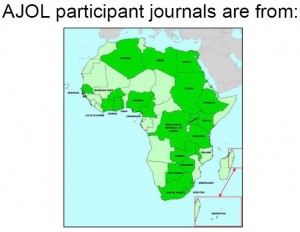
Figure 1a: Distribution of Journals in Africa (used with permission from Ms. Murray)
View Map of Africa in a larger map
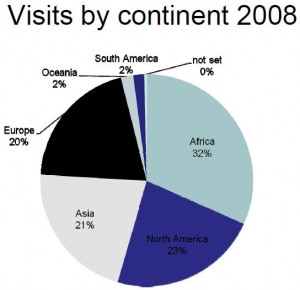
Figure 2: Visits by continent (used with permission from Ms. S. Murray)
(3) Comparison of old and new systems
After the overview and elaboration of the users and stakeholders of AJOL, Ms. Murray went into the details of the AJOL on OJS 2.2.2. She expressed the benefits of such a partnership with PKP led to better upgrading of the system. She found that more advanced versions could also be complied and were easier to upload which allowed for more capabilities in the platform that were not possible before. Figure 3 shows flowchart of the software and resources used ending with final product of the Open Journal Systems coded through the PHP scripting language using MySQL as the database management tool in the APACHE web browser run from the Linux operating system.
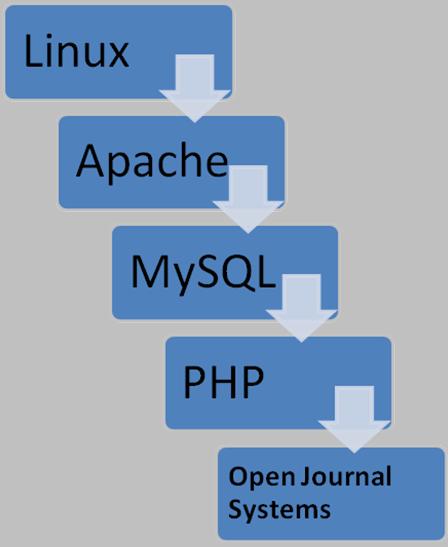
Figure 3: Software and Resources (created by Pam Gill)
A comparison of the new and old system is shown in Figure 4. The new approach is useful for all parties involved and is an excellent search tool with a new look and feel. Currently, as of July 2009, journals now manage their own AJOL pages in terms of the workflow management. In the future, Ms. Murray envisions that journals will be able to host their own versions of OJS on the PKP harvester which acts as a metadata aggregator. The newer versions will include a statistics package and offline plug-ins when connectivity is interrupted. The offline plug-in option will be crucial for users living in remote areas. Eventually, Ms. Murray envisions all journals being independent and managing their own pages.
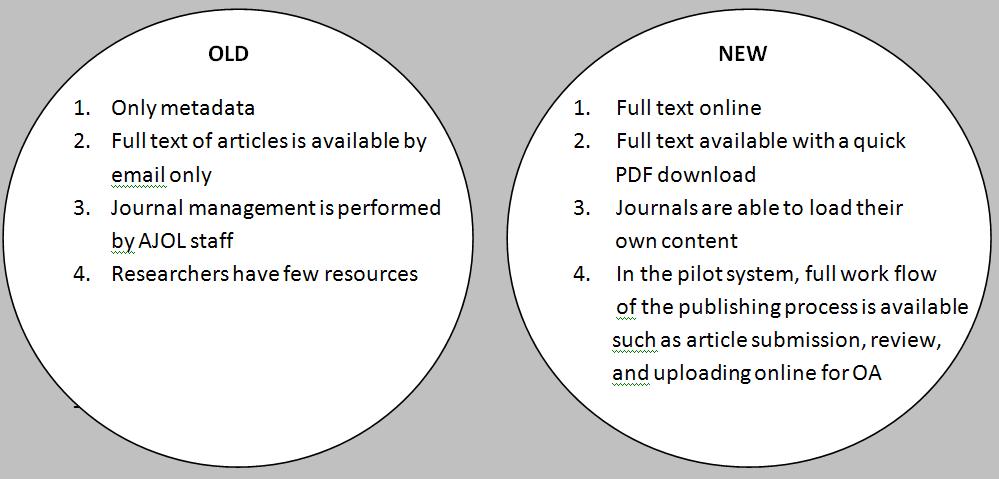
Figure 4: Comparison Chart of Old and New Systems (created by Pam Gill)
To conclude her presentation, Ms. Murray placed great emphasis on the need for the flow of global information from the North to the South (Evans and Reimer, 2009). She stressed the implementation of a new business plan that would allow journals to consider OA as a more viable possibility via AJOL/PKP. The full OJS functionality on AJOL has already made a huge difference as discussed earlier as open source software (OSS) has matured considerably. To summarize Ms. Murray ended her presentation one two key points to promote and continue the dissemination of literature in developing countries. First she brought forth the importance of carefully selecting the best tool that will take into account the needs of the users. Next, she advised to carefully align yourself with partners that you trust and who will support your initiatives for the right reasons. The following quote from Ms. Susan Murray herself summarizes these points:
“Relationships and communication are still the drivers of success, the technological tools are just the vehicle.”
– Susan Murray (2009)
This quote from Ms. Murray is used to illustrate that the technology can help propel the dissemination process in varying capacities. Technology depends on the specifications and limitations of the hardware and software. Yet, at the end of the day, relationships with others are the most important in terms of communicating, working collaboratively sharing ideas, which will ultimately lead to the success (or failure) of your goals and aspirations.
Questions from the audience asked at Ms. Murray’s session:
Question: Is AJOL published in other languages (referring to Figure 1 of African map from Susan’s PowerPoint slide)? Does AJOL have plans to bring more non-English journals to the portal?
Answer: Yes, we are hoping to introduce this to Francophone countries by starting the process of translating to French. So there will be an English/French option. We have a few journals published in Portuguese, Arabic. If we have a journal that is online (and space is NOT a problem) then we can publish in a local, indigenous and international language. Then at the same time research can be read by the local community and broadly by the rest of the world. This will increase readership and the journal will have met the needs to satisfy the best of both worlds.
Related Links
Conference attended by Susan Murray
Software/Sites
- African Journals Online
- OJS 2.2.2 Download
- PKP Open Archives Harvester: free metadata indexing system
References
Evans, J.A, & Reimer, J. (2009). Open Access and Global Participation in Science . Science. 323, 1025
Murray, S. (2009). Open journal systems (OJS) software as used by African journals online (AJOL). PKP Scholarly Publishing Conference 2009. Retrieved 2009-07-09, from http://pkp.sfu.ca/ocs/pkp/index.php/pkp2009/pkp2009/paper/view/216
July 11, 2009 1 Comment
New Ground for Research Libraries: Conference Management Systems: The Session Blog
Presenters:
- Heidi Drasbek Martinussen, System Librarian, Technical University of Denmark
- Helle Damgaard Andersen, Webmaster, IT Department for Library and Web, Copenhagen Business School
- Kirsten Suhr Jacobsen, Conference Consultant, Copenhagen Business School Library
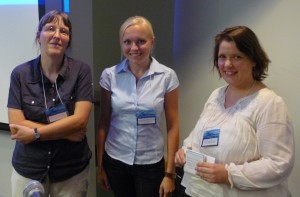
(From left to right: Helle Damgaard Andersen, Heidi Drasbek Martinussen, Kirsten Suhr Jacobsen)
Time: 2:30-3:30 pm, July 9th, 2009
Place: SFU Harbour Centre, Earl & Jennie Lohn Room 7000
———————————————————————————————
Session Overview
Beginnings
Denmark’s Electronic Research Library (DEFF) began a project in 2008 to review twenty open source and proprietary conference management systems and to test out the three that were best suited for research libraries (i.e. includes functionalities such as registration/payment, review process, etc.) This project was carried out collaboratively by the Technical University of Denmark (DTU), Aalborg University, and Copenhagen Business School (CBS); each institution was to test out seven systems, respectively.
The following diagram represents the various characteristics of the systems, such as those that only support review or registration/payment functionalities, as well as pricing – red denotes that the system was VERY EXPENSIVE.
(source)
Following the preliminary testing stages, the three institutions each chose one of their seven conference management systems, and carried out pilot projects on the selected system:
1) Proceedings Central tested by Aalborg University
Proceedings Central (now ScholarOne Proceedings) was a proprietary system developed by Thomson Reuters. While it had many benefits, its major downfall was that it was expensive and only supported review functionalities, much more like the Open Journal Systems (OJS) publication system. In addition, it was frustrating to use outside of North America because the system was configured to follow US time only.
2) Indico tested by the Technical University of Denmark
The Technical University of Denmark (DTU) has been using the Indico system for several years now. It is an open source system that was originally developed by the European Organization for Nuclear Research (CERN) and supported by the European Union. Its greatest advantage is that it makes registration very easy– setting up registration forms can take as little as half an hour. The major challenge with Indico is that the system is not aesthetically pleasing, but they are currently working on developing a better looking version that is expected to be available in the fall. The presenters likened Indico to the ‘little brother’ of Open Conference Systems (OCS) as its functions are very comparable to the latter.
3) Open Conference System (OCS) tested by the Copenhagen Business School
The Open Conference System (OCS) was developed from OJS system and thus has inherited characteristics that are not always best suited for the needs of a conference management system. An example of this is that it is difficult to set up individual conferences– they must be set up as annual conferences.
Conclusions
While there are still many items on the presenters’ wish-list for OCS, the system seems to be the best so far in terms of designs, the building of the conference site, and multilingual support. It also has a large community of users behind it, and includes a wiki, as well as a support and user discussion forum.
Future Directions – a further look into the systems
The goal for the current project is to have DTU run fourteen conferences with Indico in 2009, and CBS run seven conferences with OCS to further develop and examine the respective systems. DTU and CBS also hope to collaboratively develop a ‘light’ version of OCS, that has fewer functions to better:
- provide for a quick set up for registration,
- support a conference that already has its own webpage, but requires payment and review functions,
The Role of the Library
The presenters also highlighted the role of the library in relation to the use of conference management systems. The library can serve as technical/user support, act as a central solution and housing for conferences, as well as provide payment system integration so that users are not limited to using PayPal.
Questions
Comment: Fantastic work. It is exciting to see someone to push forward OCS. Major problem with both OJS is that everyone is going in different directions. The more institutions pick up OCS, the more polish and fine-tuning it is going to get. Good to get feedback. This is the advantage to open source– this is how the software improves! And an obvious sign that the community works effectively.
Question: What is the volume for abstracts, attendees, etc. (that is provided by OCS)? Answer: Very wide range.
Question: How did you come down to deciding on Indico and OCS? Did you use a checklist for all the technical requirements for the 20 systems? Answer: Yes.
Question: Is there any proprietary system that has similar functional abilities of OCS and at reasonable price range? Answer: It is very difficult to get prices out of proprietary systems and functionality is usually very unclear-“this system does it all” seems to be the standard response.
References
Martinussen, H., Damgaard, H., Jacobsen, K., & Pedersen, J. (2008). Nye veje for forskningsbibliotekerne? conference management systems. DF Revy, 31(8), 21-23.
Related Links
July 10, 2009 Comments Off on New Ground for Research Libraries: Conference Management Systems: The Session Blog
New Forms and Forums: How Press Cooperatives are Launched and Why it’s a Good Thing: The Session Blog

Freire Project
(Source)
Presenters:
- Dr. Shirley Steinberg – McGill University. Director, The Paulo and Nita Freire International Project for Critical Pedagogy. Bio
- David Smith – Technical Manager, The Paulo and Nita Freire International Project for Critical Pedagogy. Bio
July 9, 2009, 4:00-pm-4:30 pm. SFU Harbour Centre. Rm 7000
Session Overview
Through McGIll University’s Paulo and Nita Freire International Project for Critical Pedagogy, Dr. Steinberg and Mr. Smith have worked to help other centres with similar interests publish open access scholarly work as well as create communication networks to take advantage of social networking and other less formal publishing opportunities.
Dr. Steinberg spoke about the creative aspects of going from a journal in one’s mind to actually creating an open access journal. She noted that when working with associations, if they already had a print journal then it was a relatively easy transition to an open access online journal. However, the challenge is much greater for groups that don’t have previous experience creating a journal.
Dr. Steinberg illustrated her talk with the example helping Australian educators with the creation of a new journal: antipodes: a journal of critical southern education. Similar to Canada, the Australian educators face considerable challenges based on the difficulty in physically getting people together to communicate. Additionally, their government insists on a strict hierarchically tiered referred journal system. In this case, Dr. Steinberg noted that they focused first on creating a network of critical educators before they concentrated on creating the journal. As a result of , in addition to the community having a focus on critical pedagogy, they also had the common goal of discussing new models for peer refereed journals.
Mr. Smith continued the talk with some of the more technical as well as social networking aspects of their project. He started by commenting on a number of inspiring aspect from John Willinsky’s keynote address. Mr Smith noted that the International Journal of Critical Pedagogy (IJCP) uses the Open Journal System (OJS). But he pointed out that the journal is difficult to find from the Centre’s website since they are struggling with the best way to present the link (conceptually) between them.
Furthermore, Mr. Smith commented that the centre’s site is still being developed and they are trying to make it a better tool to connect people. Mr. Smith commented that they would like the site to be more than just a repository for formal scholarly work (e.g. referred journal) and that they are interested in promoting less formal but still very valuable modes of communication as well (e.g. blogs, wikis, forums). As an example of the benefit of these social networking possibilities, Mr. Smith provided an anecdote about an educator from St. Lucia whom he has become familiar with through the Centre’s website.
Discussion and audience questions
- Dr. Steinberg responded to an audience question saying that if the local scholars were not already grounded in possible economic models for open access journals that she would help them work through various options.
- One audience member asked about the possibility of integrating Drupal with the OJS, and Mr. Smith answered that he is very enthusiastic about the possibilities of connecting the two.
- Dr. John Willinsky commented that these presentations reminded him that the importance is far greater than the journals only being free. He sees these examples as highlighting the importance of the networking and criticism opportunities that help to contribute to to creating a critical culture.
- Another audience member commented that that there appears to be a relationship between more people submitting to the open access journals and more them doing more reviewing. That is, they are reviewing more work than they were before.
Related Links
- The Paulo and Nita Freire International Project for Critical Pedagogy
- About Paulo Freire
- Critical Pedagogy
- The Public Knowledge Project Open Journal System (OJS)
- Drupal – Open Source Content Management Software
July 9, 2009 Comments Off on New Forms and Forums: How Press Cooperatives are Launched and Why it’s a Good Thing: The Session Blog
